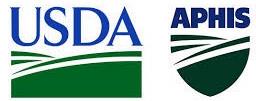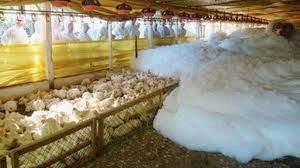 The USDA-APHIS has belatedly announced that it will conduct a survey on risk factors associated with outbreaks of highly pathogenic avian influenza (HPAI) on turkey farms. To date, 7.8 million turkeys have been depopulated on 180 farms in seven states.
The USDA-APHIS has belatedly announced that it will conduct a survey on risk factors associated with outbreaks of highly pathogenic avian influenza (HPAI) on turkey farms. To date, 7.8 million turkeys have been depopulated on 180 farms in seven states.
The case-control survey is intended to identify differences in management practices and farm factors between units infected with HPAI and those that escaped the virus. It is intended that the telephone case-control survey will be conducted in November. It is questioned whether this exercise will contribute to meaningful recommendations on prevention. It would appear that the intended survey is a replay of the risk evaluation conducted in 2015 after extensive losses among turkey grow-out farms in Minnesota.
 It is a matter of record that both EGG-NEWS and CHICK-NEWS have advocated for comprehensive and structured epidemiologic studies on risk factors leading to outbreaks of HPAI. The study on turkeys should have been conducted at least five million birds ago in April of this year when results might have contributed practical suggestions to protect flocks.
It is a matter of record that both EGG-NEWS and CHICK-NEWS have advocated for comprehensive and structured epidemiologic studies on risk factors leading to outbreaks of HPAI. The study on turkeys should have been conducted at least five million birds ago in April of this year when results might have contributed practical suggestions to protect flocks.
It is questioned whether a telephone survey will provide the data required for an understanding of factors contributing to infection. Telephone surveys are cheap to conduct but are subject to selection bias. The approach lacks the ability to discern trends that would be noted by trained field investigators knowledgeable in both epidemiology and the norms and practices of the turkey industry. These include feed production and distribution, structural and operational biosecurity, farm ownership, work crews, source of poults and relationship of growers with processors.
 EGG-NEWS has criticized APHIS for inactivity in failing to conduct an epidemiologic study on the 16 complexes responsible for over 90 percent of the 36 million hens depleted as a result of HPAI during the 2020 epornitic. The weekly Egg Price And Inventory Reports posted on EGG-NEWS have included the statement, “It would have been helpful for APHIS epidemiologists to have reported on their findings from the epidemiologic questionnaires presumably completed following outbreaks on commercial farms and with special reference to the first seven large complexes affected through the end of March. The industry should have been advised of possible routes of infection and whether any obvious defects in structural or operational biosecurity contributed to outbreaks. The preliminary opinion with guidance during mid-April 2022 was not an unrealistic request and an interim report by early-May may have provided more value than a comprehensive document in 2023 or later.”
EGG-NEWS has criticized APHIS for inactivity in failing to conduct an epidemiologic study on the 16 complexes responsible for over 90 percent of the 36 million hens depleted as a result of HPAI during the 2020 epornitic. The weekly Egg Price And Inventory Reports posted on EGG-NEWS have included the statement, “It would have been helpful for APHIS epidemiologists to have reported on their findings from the epidemiologic questionnaires presumably completed following outbreaks on commercial farms and with special reference to the first seven large complexes affected through the end of March. The industry should have been advised of possible routes of infection and whether any obvious defects in structural or operational biosecurity contributed to outbreaks. The preliminary opinion with guidance during mid-April 2022 was not an unrealistic request and an interim report by early-May may have provided more value than a comprehensive document in 2023 or later.”

Failure to have initiated detailed epidemiologic investigations involving field and laboratory studies displays a lack of imagination, initiative and diligence by APHIS. Failure to identify risk factors and modes of transmission of HPAI among the early outbreaks involving egg-production complexes through May, deprived the industry of valuable information that could have been applied to modify or intensify relevant preventive modalities. A more proactive approach to understanding the epidemiology of the 2022 epornitic in each of the production sectors of the U.S. poultry industry may have saved producers, consumers and the public sector a considerable amount of money.